List of places to dance: Bridges, Rivers, Walls? Check!
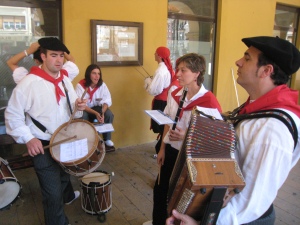 During the day that I had skipped in my last post, I got do see a rather exciting dance in the town of Beasain. Eire, one of the dancers on Kezka who also works in the office picked me up, along with two dancers from the Elgoibar team.
During the day that I had skipped in my last post, I got do see a rather exciting dance in the town of Beasain. Eire, one of the dancers on Kezka who also works in the office picked me up, along with two dancers from the Elgoibar team.
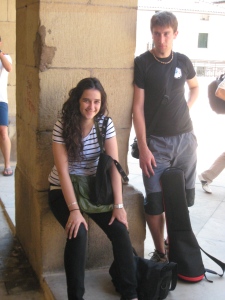
It was only a short drive to Beasain, a charming town to the east of Eibar, south of San Sebastian. We piled out of the car, and helped Eire with her camera equipment, as she was filming for the website. We crossed over a little bridge, walked down brick streets and up the stone steps to the courtyard outside of the city hall. The dancers were in costume and gathering under the balcony of the building, doing final stretches, practicing steps and footwork and just chatting togetherwhile the musicianas had some fun playing together. I got to see the last minute rehearsal of one section of the dance before the group was ready to start, which was a fun little extra! I also met the president of the group who turned out to be a wonderful women named Izaskun, who spoke very good English. She was thrilled that I had come, and started to explain all about the dancing to me. This dance was based on traditional dances, and most of the choreography was the same, but they had changed stuff around and modified it for the town in 2007, so this was their five year anniversary.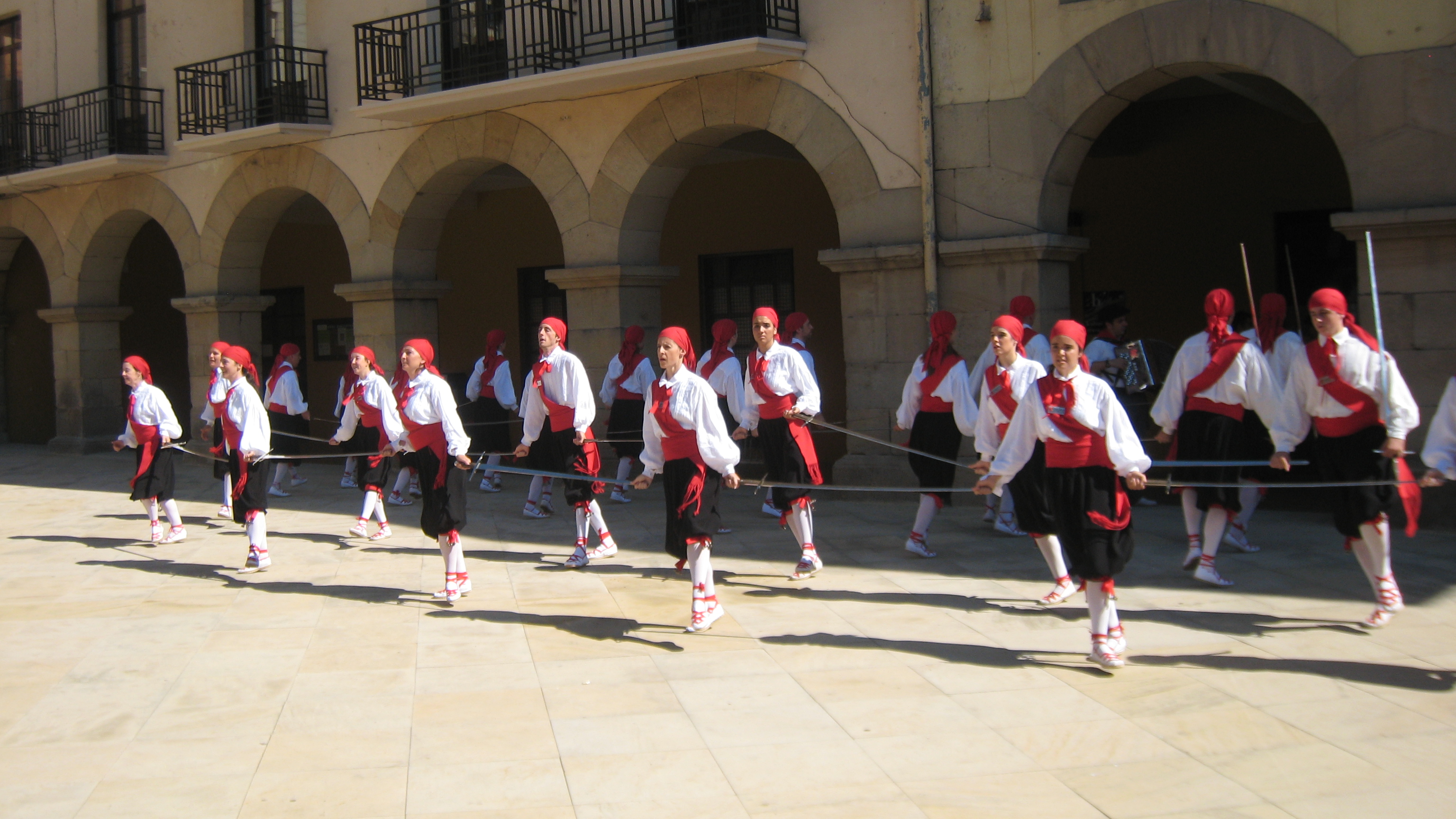
After a quick group photo, the group formed up in a similar manner to Arrate, in four lines with a leader in front. They did not have the same soloists, but instead had young dancers in a slightly outfit and the whole band following along behind. The day was absurdly hot and the sunlight reflecting off of the street didn’t help the situation at all. During the short walk we had to stop and get some refreshments, the whole team standing around and enjoying the little bits of shade we could. Here is me in action!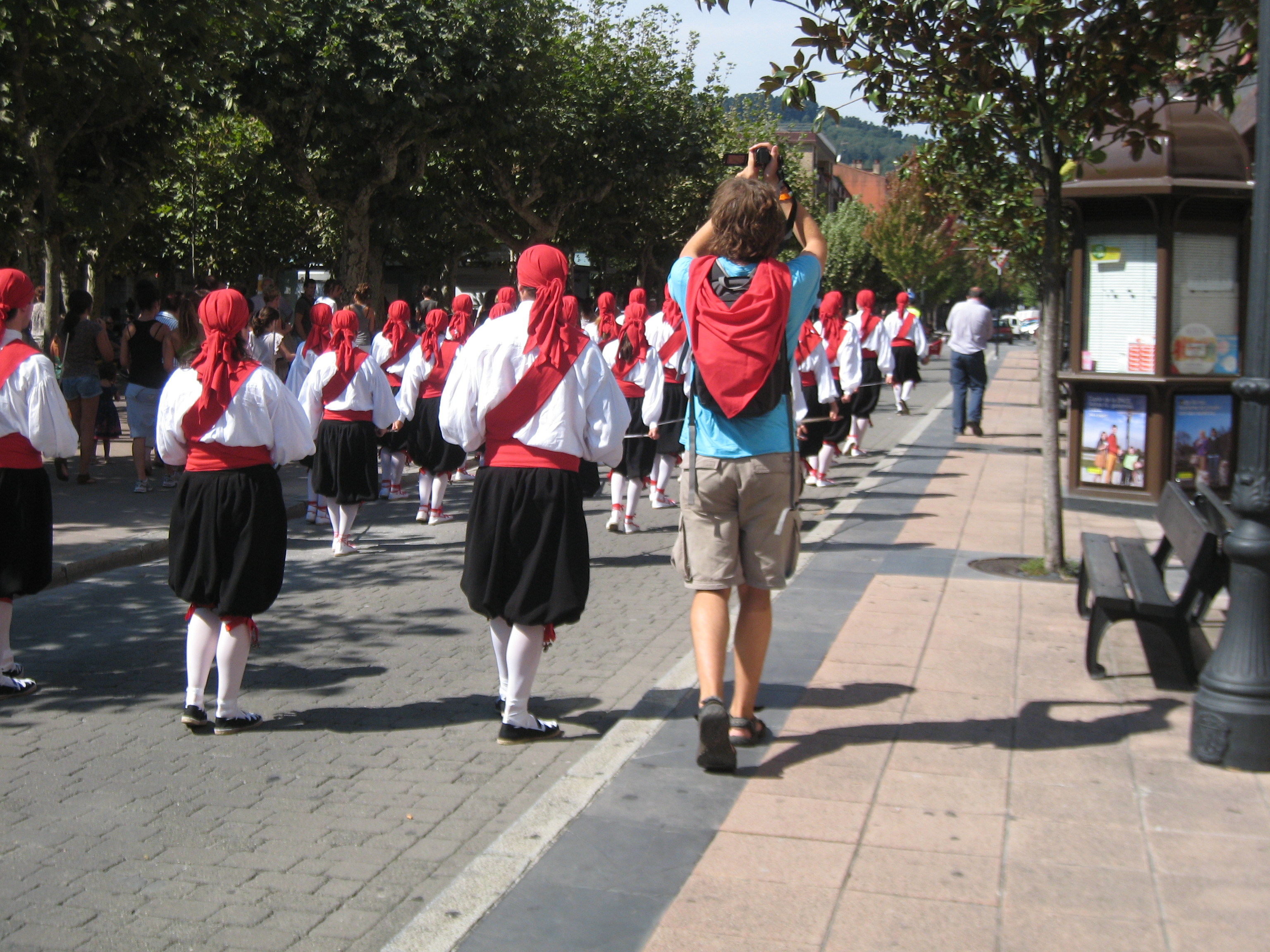
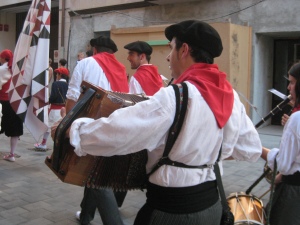 The little parade gained strength as people in the town came out to see the show, or just fell into the march and decided they were curious. Each time we stopped Izaskun came over and explained a little more about the dance and the day. We also started talking about the possibility of teaching some longsword, morris, or rapper to her team and sharing my videos from my trip! Processing onwards, the team would stop and do the “folding back on itself” figure that I had seen in Arrate at the middle of each intersection. The solo dancers had not danced yet, but there was a short section of complicated footwork in between each repetition of the figure. Most often, they decided to do these in the center of intersections, leaving the police escort to block traffic. I have to say that the basque outfits are pretty fun! It is white and red just about everywhere (with black and sometimes another color thrown in), but they make quite the spectacle!
The little parade gained strength as people in the town came out to see the show, or just fell into the march and decided they were curious. Each time we stopped Izaskun came over and explained a little more about the dance and the day. We also started talking about the possibility of teaching some longsword, morris, or rapper to her team and sharing my videos from my trip! Processing onwards, the team would stop and do the “folding back on itself” figure that I had seen in Arrate at the middle of each intersection. The solo dancers had not danced yet, but there was a short section of complicated footwork in between each repetition of the figure. Most often, they decided to do these in the center of intersections, leaving the police escort to block traffic. I have to say that the basque outfits are pretty fun! It is white and red just about everywhere (with black and sometimes another color thrown in), but they make quite the spectacle!

We arrived at the side of the river where an old stone bridge spanned the channel. The area was roped off to allow the dancers space, but my little red bandana that I had been given was the equivalent of a Press badge and allowed me to get in with the dancers. The spectacle that followed was one that I think will be hard to beat in terms of using space as part of the performance. (Tidbit from this very moment: I am in the Dantzan office and can hear the Txistu from somewhere. Practice doesn’t start for another 20 minutes (can I finish?) but I can picture the steps that go with the particular tune. This makes me happy) Anyway, the team splits into two halves and runs so half of the dancers are on each side of the river. They perform the first section of the dance on opposite banks and then run to the center of the bridge to make the “lock” and hoist a flag waver while the boy soloists and adult soloists do a dance.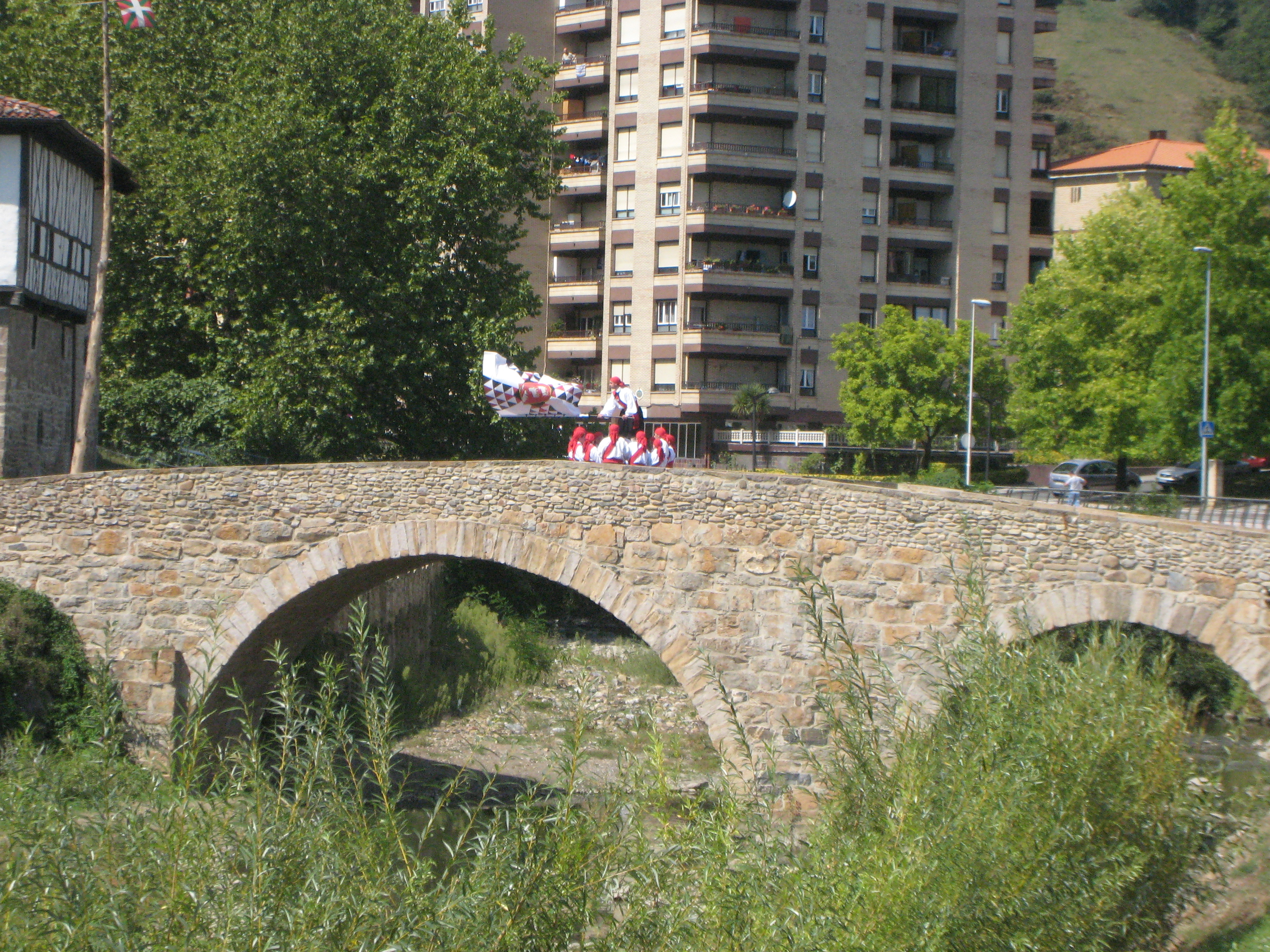
Then the amazing part comes! The team unwound and rewound while the soloists discretely disapeared, and when the team and gotten back into formation and was standing with the flag the soloists appeared again. ON TOP OF A WALL! Now, maybe I’m the only one that is really excited by this, but I thought it was pretty amazing. Their dance was great; acrobatic and graceful, and it was one of those moments when I was just amazed to be on this trip, seeing these things! (aside from, you know, everyday!)
After this there was a short pause while the crowd was allowed over the bridge to the field on the far side of the river where a number of trokeo-dantza, including one with arcs and one with a maypole, neither of which I had seen in Arrate.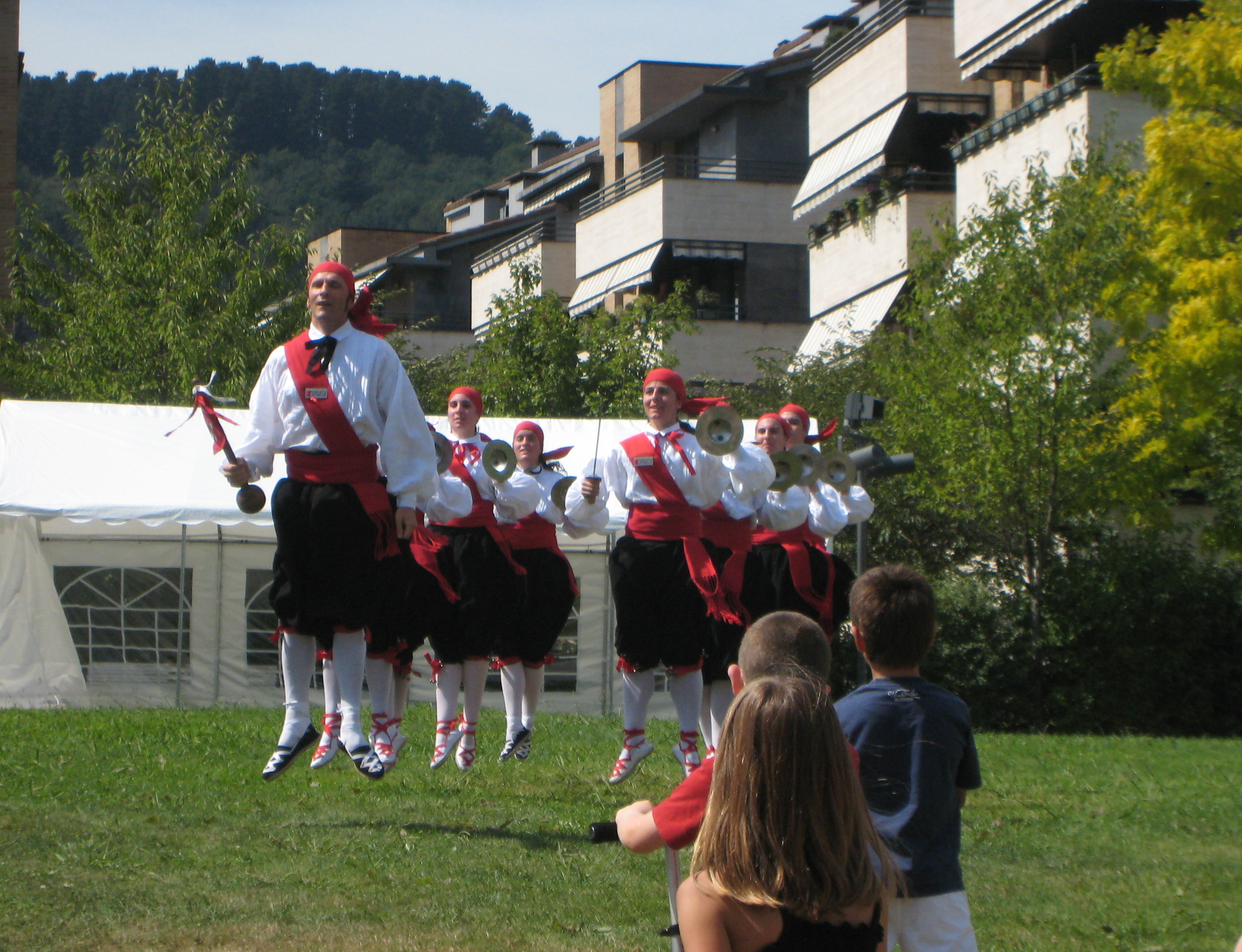
The jumping and coordination of the dances was spectacular, and followed similar structures. If you missed my post on Arrate, it has a longer description of what trokeo-dantza are.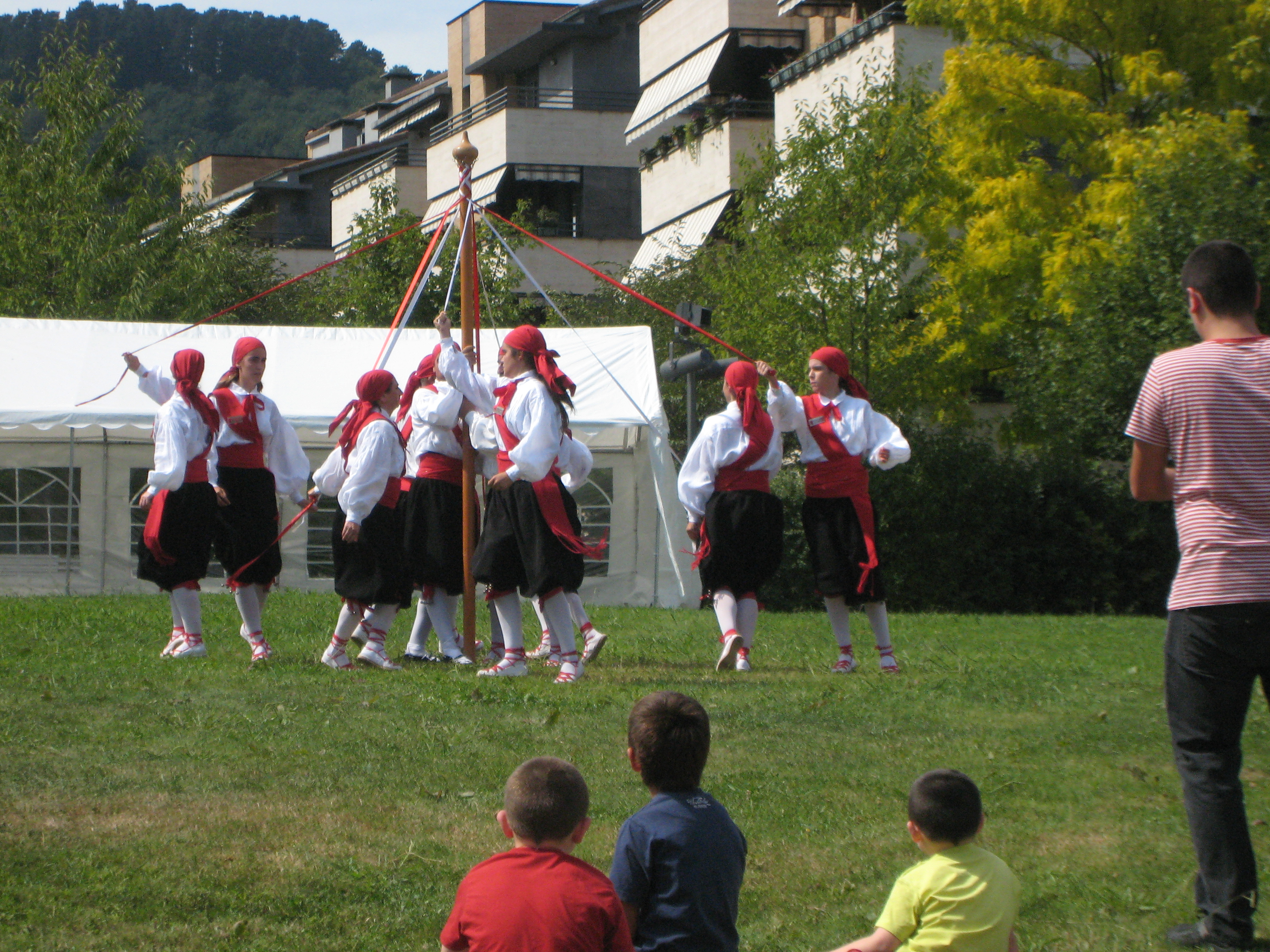
The patterns of the maypole were very simple, but the steps danced before and after were not!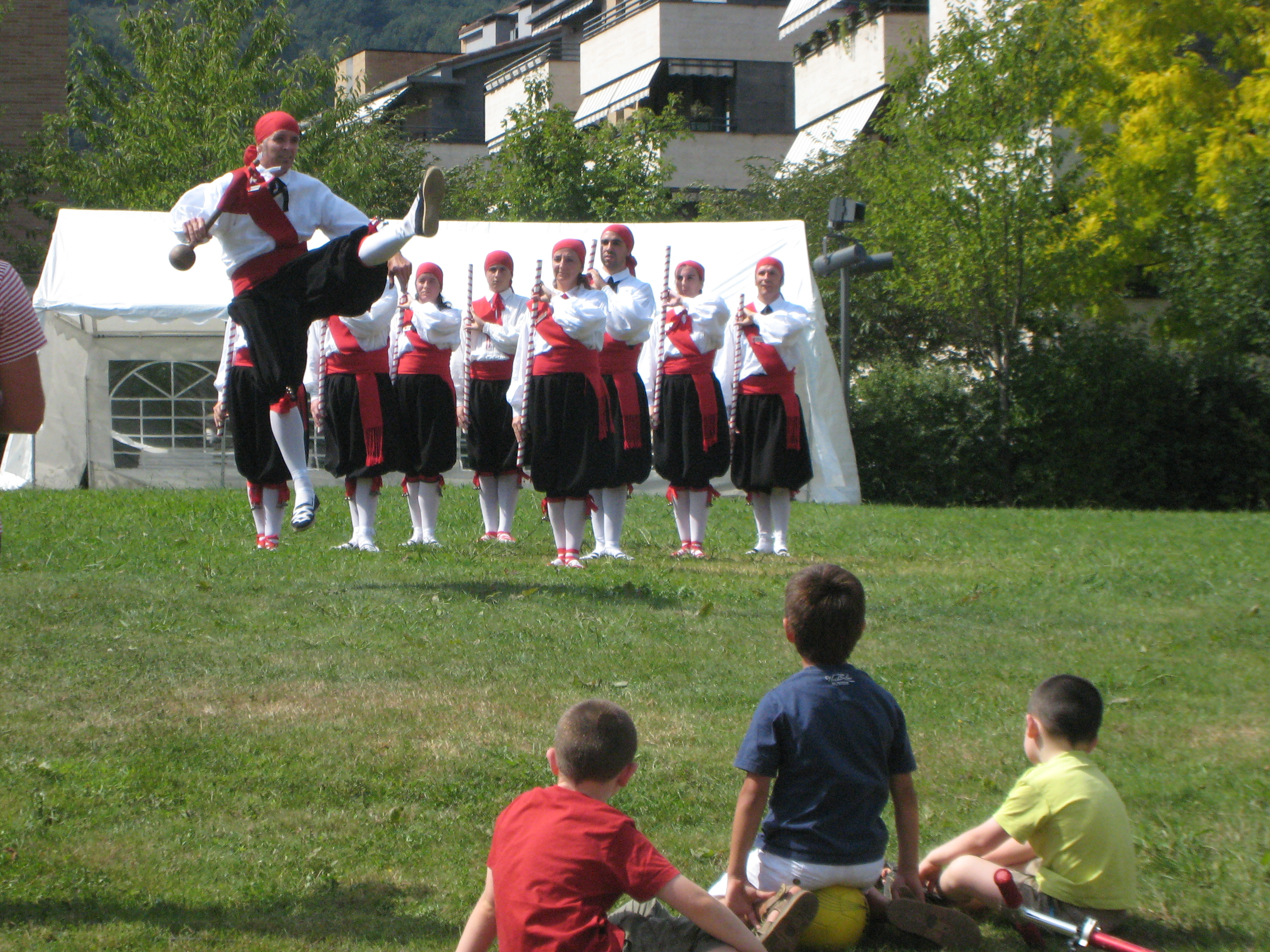
Ok, one more, sorry for the long string of pictures!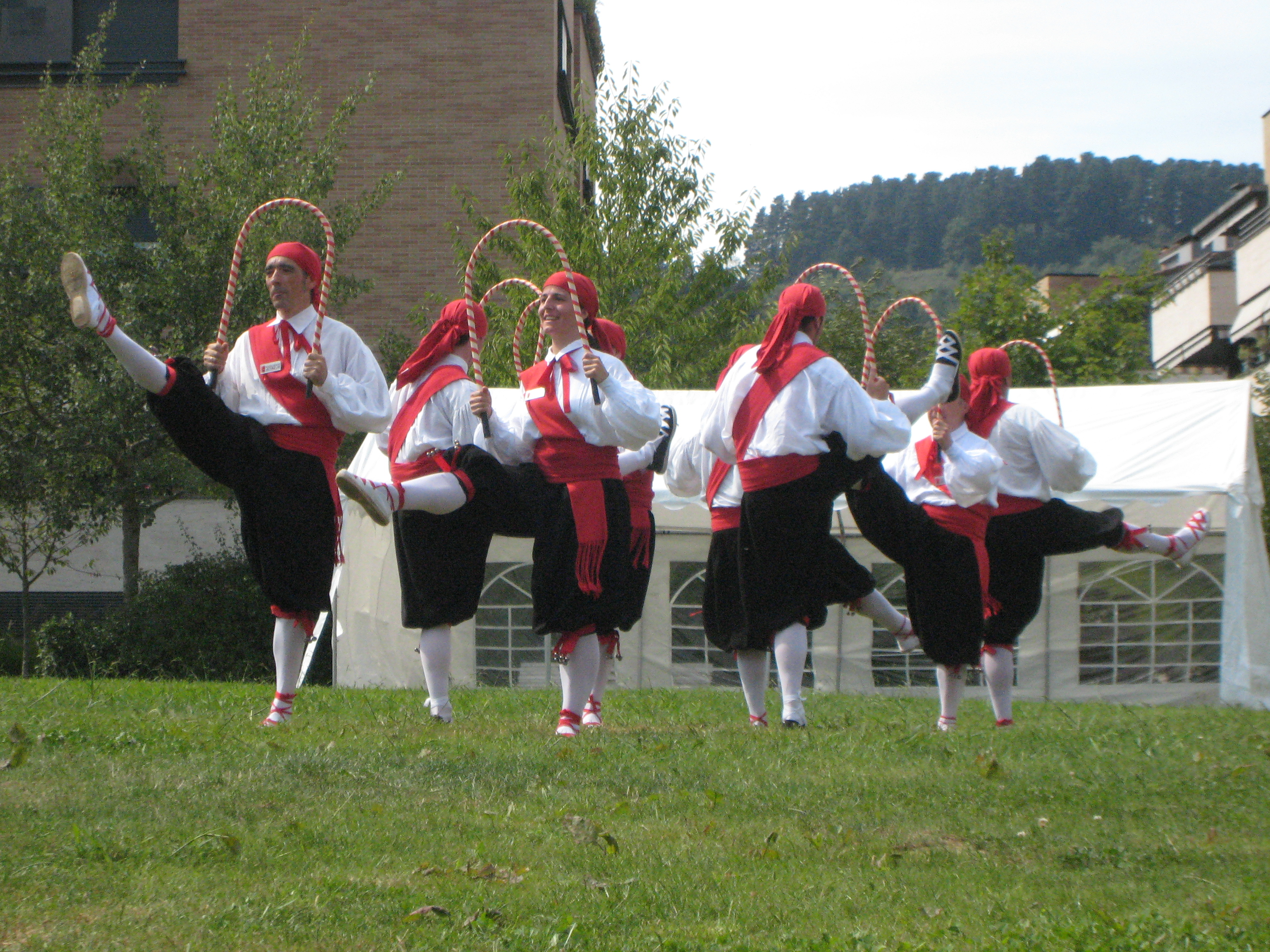
 When the dancing was done we turned to go into the feast hall, which was to take place in a “Palace.” I had been told this the day before and had been confused, but it turned out that it was (one of?) the oldest wooden structures still standing in basque country. Unfortunatly when we ran inside many with swords in hand, we found that there was a wedding taking place. Apparently someone had double-booked the venue. Unwilling to let this setback get in our way, we brought out the cider barrel and started the party by the bridge for a few hours! The Basques are very particular about their cider. It cannot be poured, but must be shot at high velocity out of a barrel and caught as far as possible away in the cup. When it is out of a bottle it is poured from high above the head, all to let the oxegen in. Either way you went about it, it was rather tasty! Oh, and group photo!
When the dancing was done we turned to go into the feast hall, which was to take place in a “Palace.” I had been told this the day before and had been confused, but it turned out that it was (one of?) the oldest wooden structures still standing in basque country. Unfortunatly when we ran inside many with swords in hand, we found that there was a wedding taking place. Apparently someone had double-booked the venue. Unwilling to let this setback get in our way, we brought out the cider barrel and started the party by the bridge for a few hours! The Basques are very particular about their cider. It cannot be poured, but must be shot at high velocity out of a barrel and caught as far as possible away in the cup. When it is out of a bottle it is poured from high above the head, all to let the oxegen in. Either way you went about it, it was rather tasty! Oh, and group photo!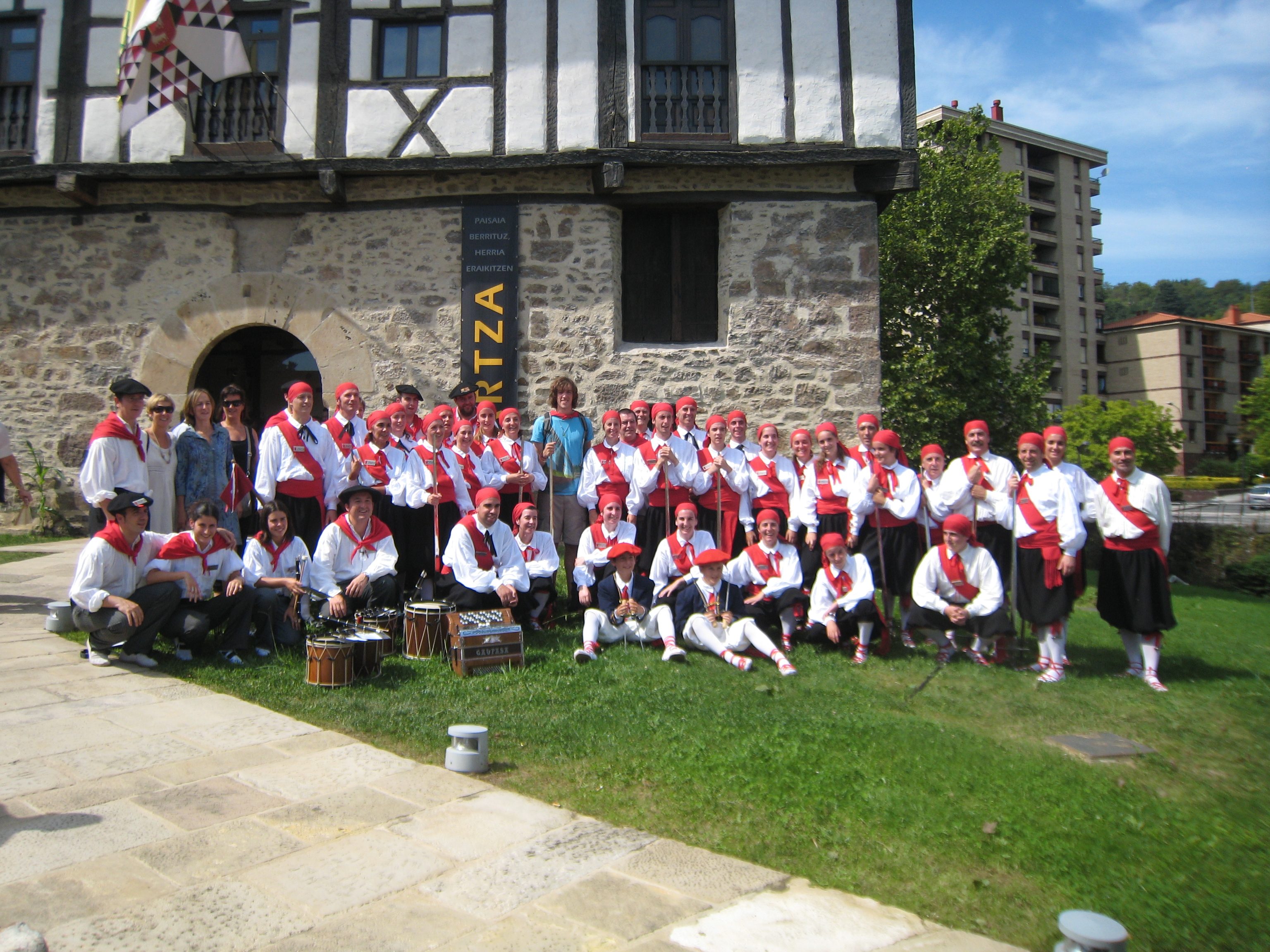
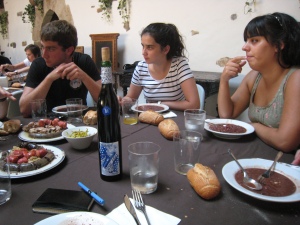 We finally made it into the palace where we had a delicous meal of traditional black bean stew with black and red sausage, hot peppers, bread, wine, and onions. The whole thing was rather tasty but the real exciting part was the reading of the book. Like Arrate, their secretary had recorded the dancers and days events in the large tome. This one seemed to be full of all the mishaps of the day, from the wedding, to the city officials forgetting to give them the city flag. I got a prominant mention and was invited to sign my name as well. They presented me with the metal badge of the dancers which I was honored to take. The dancers who had danced all five year in the group recieved a second badge with an extra ribbon, marking their accomplishment. After the meal was done there was a dance party outside. It was also here where I met Patxi Laborda, the man I had been told about at the Grand Bal d’Europe!
We finally made it into the palace where we had a delicous meal of traditional black bean stew with black and red sausage, hot peppers, bread, wine, and onions. The whole thing was rather tasty but the real exciting part was the reading of the book. Like Arrate, their secretary had recorded the dancers and days events in the large tome. This one seemed to be full of all the mishaps of the day, from the wedding, to the city officials forgetting to give them the city flag. I got a prominant mention and was invited to sign my name as well. They presented me with the metal badge of the dancers which I was honored to take. The dancers who had danced all five year in the group recieved a second badge with an extra ribbon, marking their accomplishment. After the meal was done there was a dance party outside. It was also here where I met Patxi Laborda, the man I had been told about at the Grand Bal d’Europe!
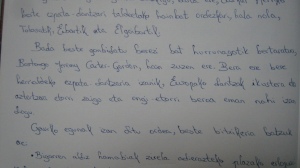
We also had an special guest coming from far away, Jeremy Carter-Gordon from Boston. As he is also a sword dancer in his country, he has come to see and analyze European sword dances and we want to welcome him warmly.
He showed up with Sabin Bikandi, a scholar and musician, bearing a huge bag of gifts for me, with CDs, a t-shirt, books, and other souviniers. One of the highlights of the bag was Sabin’s book (in english!) on a master Txistu player, but which included a lot on dancing. Reading it later that night I remembered that I actually am capable of enjoying accademic writing, which is a good realization. Sometimes you just need a break to appreciate what you have!. We all had a party on the grass with dancing and music, while Patxi taught different dances. I recognized a few from Italy and France! Just as we were leaving I met a Brit named Nick, who had lived in Basque country for 35 years and was rather surprised to see me! We said our goodbyes, passed a gaggle of girls playing some handclapping game to the the tune of “I’ve been working on the railroad” and drove back home. What a wonderful, jam-packed day of fun!
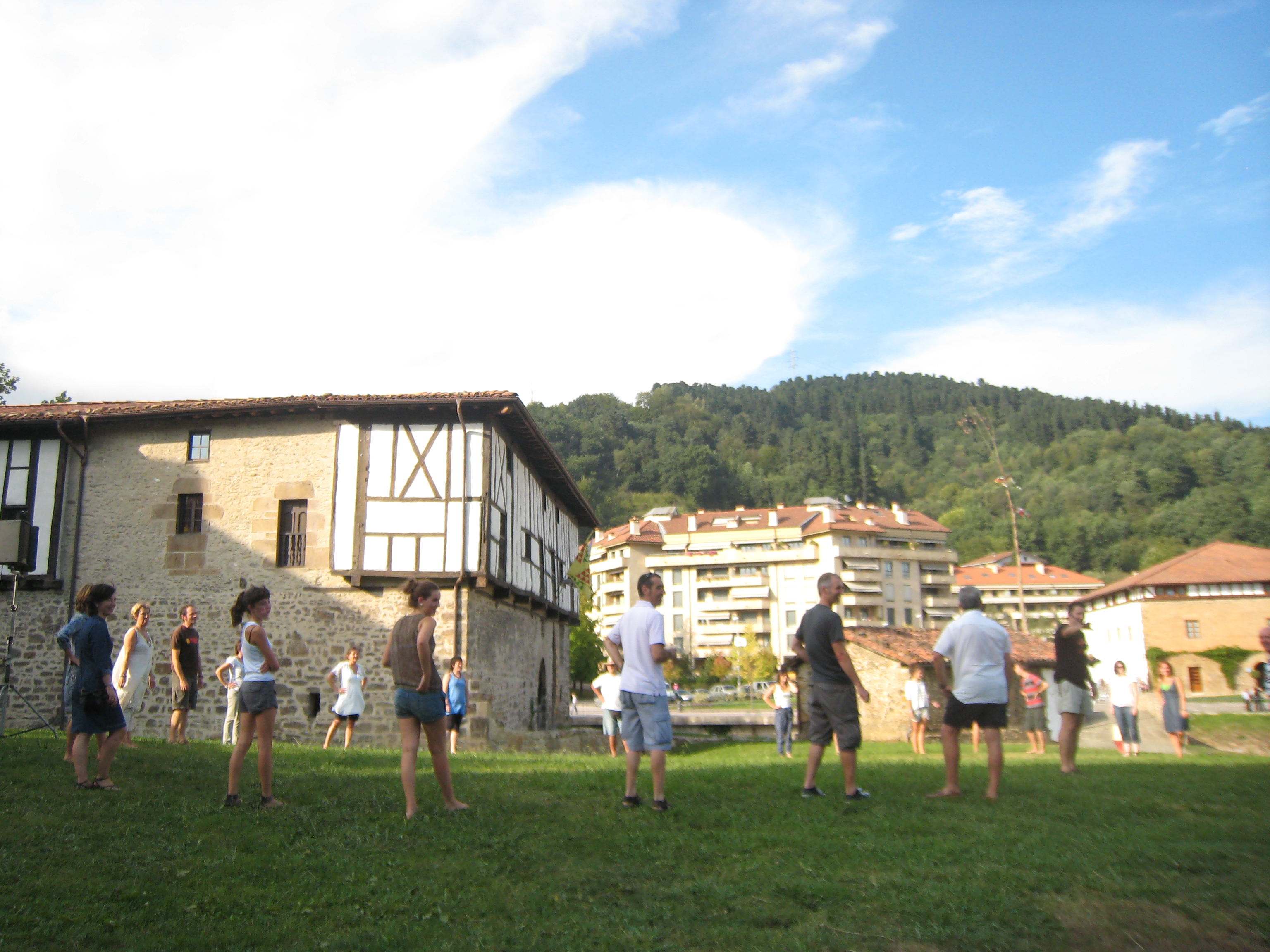
Great post! Thanks for sharing your excitement…made for fun reading!
[…] dancing. In addition to teaching at Kezka, had been invited back to Beasain to teach rapper. The Beasain sword dancing in September was great fun and when I had gone to teach them morris in October they came out with […]